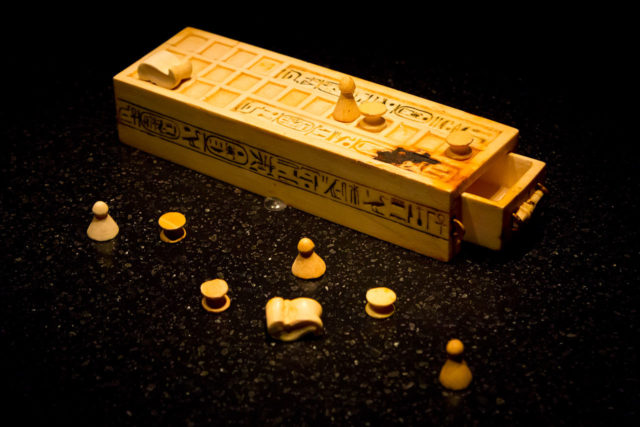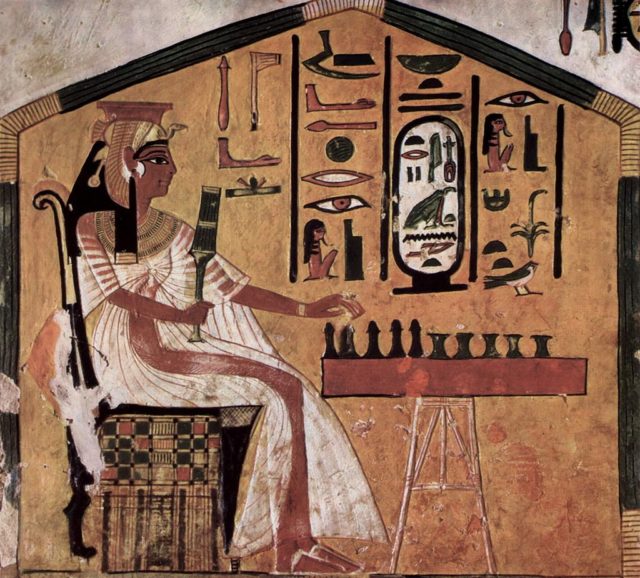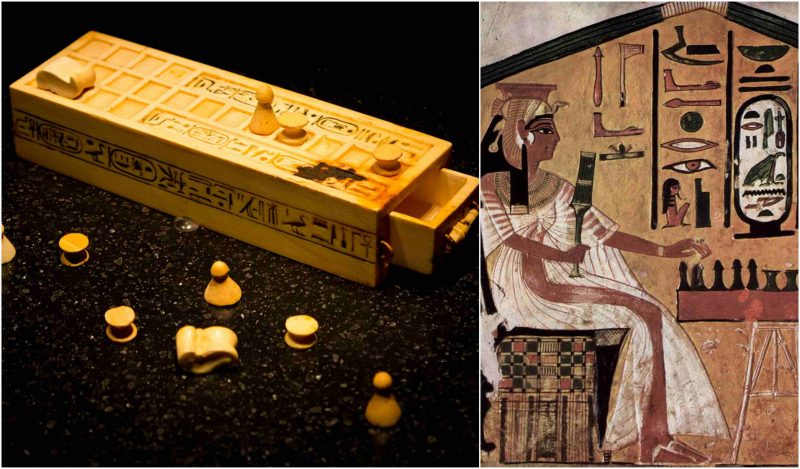Board games were a very common form of entertainment in ancient Egypt, and people from all classes of society played them. Over the years, archeologists have discovered many different board games across the country. One particularly interesting board game comes from Predynastic and Ancient Egypt and is called Senet.

The oldest hieroglyph depicting a Senet game dates to around 3100 BC, which makes Senet one of the oldest known board games. It is often found at Predynastic and First Dynasty burial sites, c. 3500 BC and 3100 BC. Its full name in Egyptian was “zn.t n.t ḥˁb” meaning the “game of passing.” The game board is a grid of 30 squares arranged in three rows of ten, and the playing pieces consist of two sets of “pawns”.
Paintings of this ancient game have been found in the Third Dynasty tomb of Hesy (c. 2686–2613 BC), and in the tomb of Rashepes (c. 2500 BC), among others.

Due to the element of luck involved in the game and the Egyptian belief in determinism, people thought that a particularly successful Senet player was under the protection of the sun deity Ra, the wisdom deity Thoth, and sometimes the afterlife deity Osiris, all major gods of the national pantheon. By the time of the New Kingdom of Egypt (1550–1077 BC), the ancient board game had become a kind of talisman for the journey of the dead. Consequently, it was common practice to place the game board alongside other objects in the grave. Senet became so important in this regard that it is mentioned in the Chapter XVII of the Book of the Dead.
